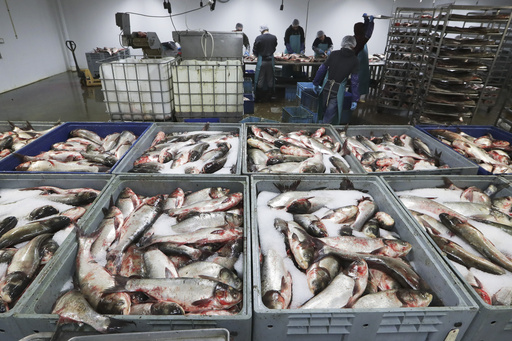A potential impasse between former President Donald Trump and Illinois Governor JB Pritzker, which threatened to derail a crucial $1.2 billion initiative to prevent invasive carp from entering the Great Lakes, appears to have been resolved. This comes as the Trump administration has affirmed its commitment to fund its portion of the project, thus allowing progress to continue.
After significant delays since February, Illinois authorities are now poised to proceed with acquiring necessary land for the continuing implementation of a system aimed at deterring the carp invasion. This system will employ extensive bubble curtains, use electrical fields to incapacitate the fish, and play certain sound frequencies to disorient them, thereby keeping them at bay.
Back in 2020, planning began under the guidance of the U.S. Army Corps of Engineers, in collaboration with state officials from Illinois and Michigan, to establish a formidable line of defense on the Des Plaines River near Joliet, Illinois. The goal was to prevent invasive carp from infiltrating Lake Michigan. In 2024, an agreement was struck to advance this project, utilizing $226 million set aside through the Bipartisan Infrastructure Law, consolidating a previous decision where the federal government would shoulder 90% of operating and maintenance expenses, as outlined in the Water Resources Development Act.
However, the project faced an abrupt challenge when the Trump administration suspended federal grants and loans, citing a review on how the funds aligned with its emphasized priorities. Despite the quick reversal of this suspension, uncertainties lingered over federal financial commitments. This prompted Governor Pritzker, known for his outspoken criticism of Trump, to demand concrete assurances that the federal government would maintain its financial support before advancing property agreements crucial to the project’s progress.
In a significant development, the White House confirmed its recognition of the potential threat that invasive carp pose to the Great Lakes’ recreational and fishing industries. The administration committed to cooperation provided that state officials, especially in Illinois, finalize necessary deals by a stipulated deadline, and promised streamlined permitting processes to facilitate the project.
Governor Pritzker responded positively to these assurances, viewing it as a satisfactory resolution moving the project forward. Joel Brammeier, leader of the Alliance for the Great Lakes, expressed optimism by acknowledging this progression as a return to normalcy and a crucial step forward.
The origins of this invasive species problem trace back to the 1960s and 1970s, when four carp species were imported to the U.S. to manage algae growth in southern fish farms and sewage ponds. They eventually escaped and began spreading through the Mississippi River, reaching multiple northern tributaries. Discussions have persisted over how best to block their advancement into the Great Lakes, particularly given the threat they pose to the local $7 billion fishing industry.
While existing fish-repelling barriers on the canal linking the Mississippi River to Lake Michigan somewhat mitigate the risk, the newly planned measures at the Brandon Road Lock and Dam aim to bolster defenses. They will serve as an essential blockade between the carp-infested Illinois River and Lake Michigan. There remains hope, led by sentiments from experts like Brammeier, that sustained commitment will eliminate any further setbacks, ensuring these preventative measures are implemented smoothly to protect the Great Lakes ecosystem.



